Part two. After leaving The Nasrid Palaces in part one on a timed visit we walked through the Partal gardens, Upper Alhambra gardens and headed towards the Generalife. In the Nasrid period there would of been streets and houses here occupied by wealthy people – high ranking court officials, religious and administrative buildings and several small palaces and gardens.
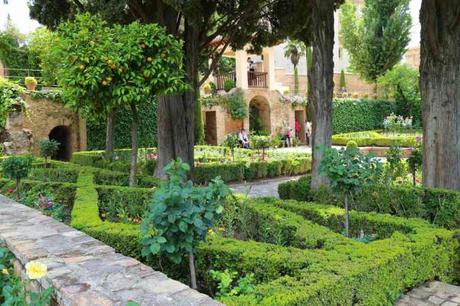
One of the series of gardens within the Alhambra complex near to the Palace of the Partal
After Granada was captured in 1492 the houses fell to ruin, some were destroyed or built over and the occupants were forced to move away to the outlying Albaycin area. In the 1930’s a new style of landscaping began here as a part of the re-discovery of Alhambra.
We walked in any shade we could find through the Partal gardens along the route which passed the Tower of the Princesses, named after Washington Irvin’s tale, towards the area known as the New Generalife gardens.
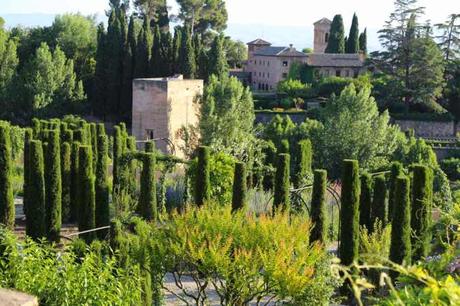
Tower of the Princesses seen from the new Generalife gardens
The New Gardens occupy a part of the old Orchards of the medieval almunia (a kind of agricultural settlement in Hispano-Islamic times).
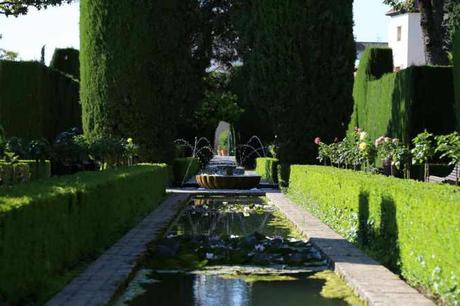
Water Pool in New Gardens
The architect Leopoldo Torres Balbas created these gardens between 1931-32. There were signs for visitors explaining that the health and appearance of the Cypress Trees had been adversely affected by the unsuitable planting and growing conditions. Hence the Cypress walls in the new gardens are also undergoing restoration, which will last several years.
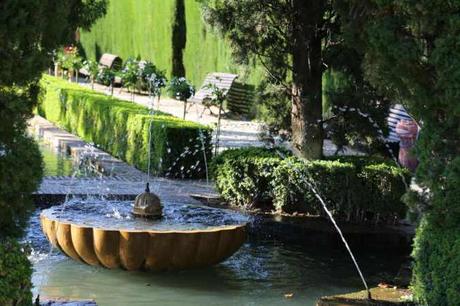
Welcome seating along the central pool with some of the walls of Cypress
The gardens in place, were lush and filled with wild loose planting, Roses and Orange trees, which must provide inspiration to garden designers the world over.
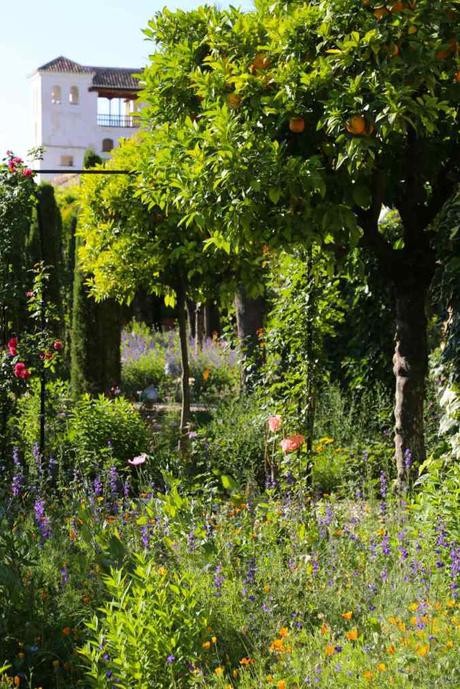
New Garden loose planting
Just before the entrance to the Generalife Palace Gardens there is another more formal area with seating, wonderful Orange trees, more roses and pools of refreshing water, if we had not been so eager to see the Palace gardens we would of lingered longer.
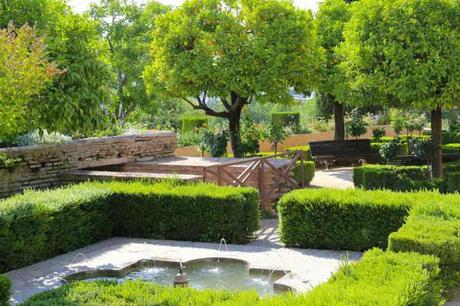
Garden by the Palace entrance
We walked through the modest public entrance, where a guide electronically notes your ticket number, there is only one visit allowed into the two Palace Gardens. We walked through another courtyard once used as the Stable yard and now lined with Orange trees and through to the Patio of the Irrigation Ditch. A fourfold garden divided by a water rill and backed by high walls.
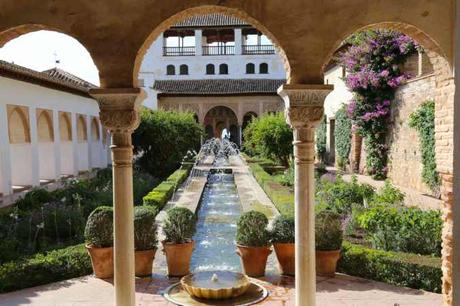
The Patio of the Irrigation Ditch with the viewing Pavilion above
The water pool is 48.70 metres long by 12.80 wide. The small trees are Pomegranates, one on each side of the central axis. The 18 arches seen on the left hand side of this photo were added in 1670 when this area was altered to a Christian chamber and two further rooms were added. The restoration in 1926 removed these additional rooms and restored the patio to its original appearance.
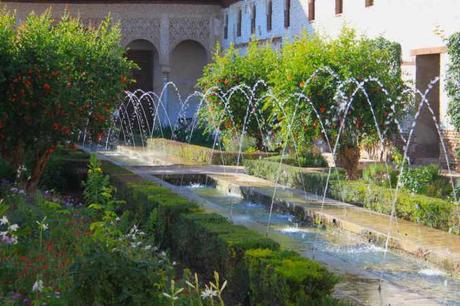
Pomegranate Trees and water spouts in the Patio of the Irrigation
Although, the water spouts were a 19th century addition as were the raising of the beds which were originally 50 cms below the paths. Leading through the decorated arches at the far end we walked on to the Patio of the Cypresses.

Patio of the Cypresses
The pool is surrounded by Myrtle Hedges and planted with roses. We read that the old cypresses on the verandas give the patio its name. The most famous is the Cypress of the Sultana in which according to legend, Boabdil’s wife used to meet another man. This led to the death of the people of the man’s tribe, their throats were slit.
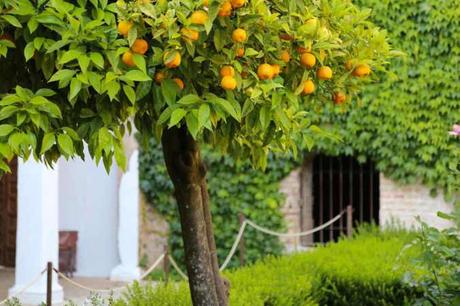
Orange Tree in the Patio of the Cypresses
Stairs lead out of the palace gardens to the higher level where there are more gardens to walk in, to one side is the staircase archaeologists believe to have been in Granada before the Nasrid rulers, we walked back through the avenue of Cypress tress, some are hundreds of years old, we read that some specimens are over 1,000 years old. We felt privileged to visit.
(I gave details of buying tickets in my first post, its best to book in advance, we were advised that tickets are released 6 weeks before and sell out very quickly, so for a June 1st visit they were released on April 20th. There are lots of options including guided tours on the Alhambra official website and bookings were through ticket master).
Recommended reading ‘The Alhambra’ by Robert Irwin – very readable book explaining the history of the Alhambra.
